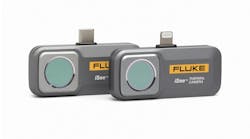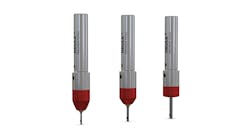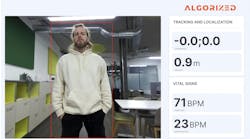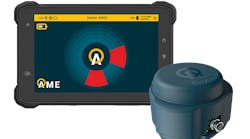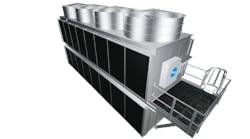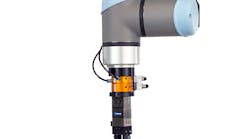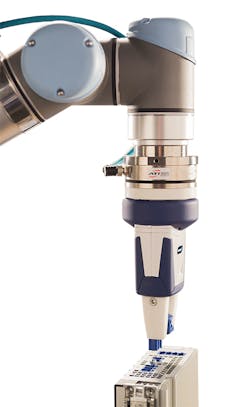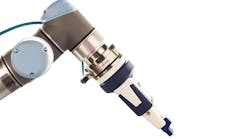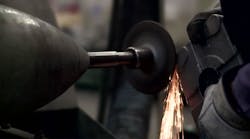Conquering Collaborative Challenges with End-Effector Kits
The number of potential applications for collaborative robots (cobots) only continues to climb. And, after seeing a cobot in action, it is easy to understand their potential. Putting it all together, however, can be challenging. The process of selecting the right mix of end-effectors, and all the components needed to make them work, is no easy feat.
A robotic end-effector is any object attached to the robot flange (wrist) that serves a function. Some common examples include robotic grippers, tool changers, force/torque sensors, compliance devices, robotic paint guns, or robotic deburring tools.
ATI’s Cobot-Ready Accessory Kits play a key role in expanding collaborative robot usage to conquer a wide range of applications within a single cycle. The kits bundle existing end-effectors (such as ATI’s QC-11 Automatic Tool Changer, MC-10 Manual Tool Changer, CDB Compliant Deburring Tools, or Axia80 Force/Torque Sensors) with everything needed to get up and running. Specifically, each kit comes with the product itself, any required interface plates, mounting fasteners, implementation software, and even the Allen wrenches to complete the installation.
The goal in creating these kits is clear: it’s an opportunity to leverage ATI’s expertise and understanding of industrial applications to provide a turnkey solution for enhanced cobot productivity.
“While the kits we designed satisfy the majority of the market, ATI tool changers have a lot of adaptability,” says ATI Application Engineer Dave Furguson. “In the event that a system requires other connectors that don’t come standard in the kit, it is still very possible to make things plug and play. Our objective with the Cobot-Ready Accessory Kit is to simplify the installation and implementation process, even for users who are new to automation.”
Effectively boosting efficiency
By design, cobots have the potential to accomplish challenging tasks. Yet far too often, manufacturers find themselves in a situation where cobot functionality is limited to a single operation. For example, in an application that requires different styles of gripping tools or situations where a robot works with an employee to complete a task, but only remains active half of the time.
Boosting efficiency and productivity often serve as driving forces when organizations invest in cobots, and there is no need to restrict these investments to a single purpose. By offering plug and play convenience, ATI’s Cobot-Ready Accessory Kits enable manufacturers to easily accommodate multiple applications regardless of complexity.
The Tool Changer end effector kits are a perfect example. “ATI Tool Changers thrive in any application type. As a result, we can enable robots to conduct any number of operations within a single cycle. For instance, a collaborative robot can start the cycle doing material handling, move on to a gluing or dispensing station, and then perform a vision-enhanced operation before ultimately going back to another material handling task,” he says. “The benefit here is that you can unlock the full potential of the robot by always keeping it productive. This also allows employees to shift their focus to cognitive aspects of the job, such as final testing, quality verification, or other tasks that require critical thinking.”
Safety first
Since 1989, ATI has worked tirelessly to become the gold standard for tool changer technology, from entry-level offerings to custom-engineered designs. ATI Tool Changers have built-in fail-safes to prevent dangerous situations like tool drops. With the company’s Cobot-Ready Accessory Kits, parts are free from pinch points and sharp edges so robots can work in collaboration with people in a growing array of applications. ATI’s vast experience designing and developing Robotic Tool Changers allows them to safely bring automatic changeover of robotic end-effectors to any manufacturing environment.
